Embarking on the Hanoi to Mai Chau travel route is an adventure that seamlessly blends modern convenience with authentic Vietnamese charm. This journey, known for its bus transfers and motorbike trips, takes you through a tapestry of tourist destinations featuring breathtaking scenic views, rich cultural experiences, challenging hiking trails, diverse accommodation options, and flavorful local cuisine. Whether you’re seeking a relaxing bus ride or an exhilarating motorbike exploration, this route from the bustling streets of Hanoi to the serene valleys of Mai Chau promises unforgettable memories and insights into Vietnam’s heartland.
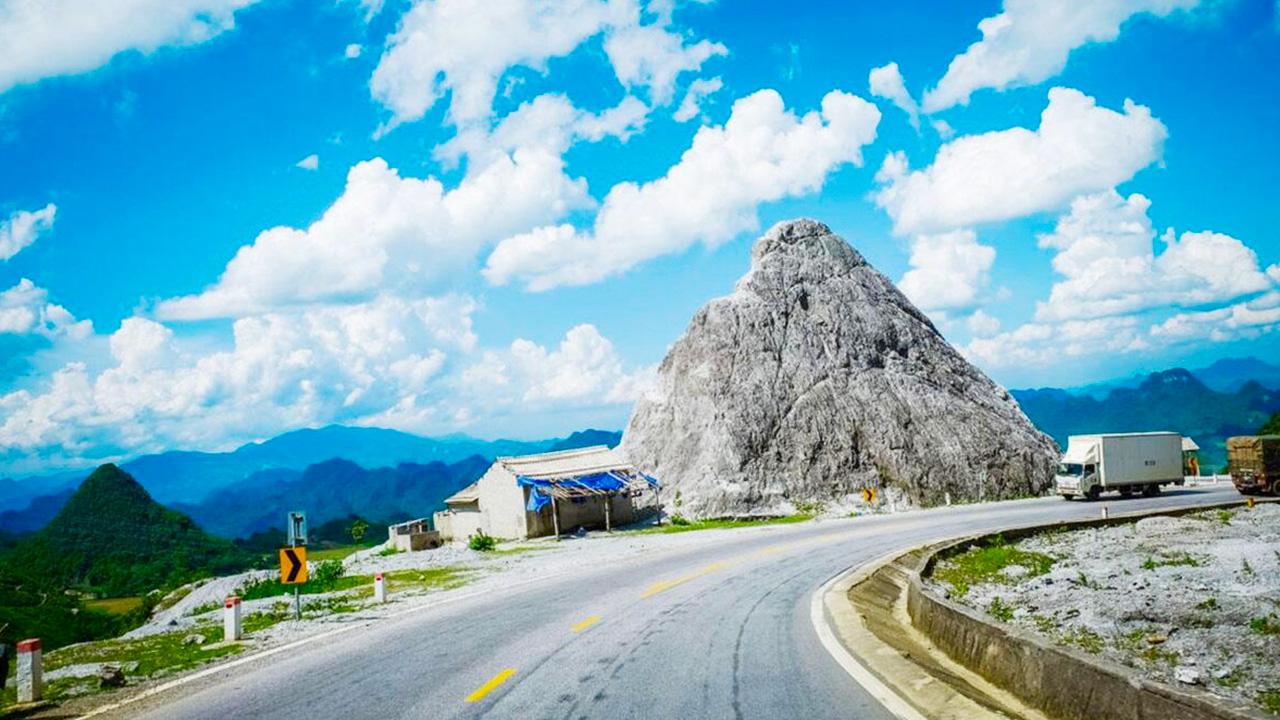
Best Transportation Options from Hanoi to Mai Chau
When planning your trip along the Hanoi to Mai Chau travel route, selecting the right transportation method can significantly enhance your experience, turning a simple journey into an integral part of your adventure. This route, stretching from the urban energy of Hanoi to the tranquil landscapes of Mai Chau, offers various options that cater to different preferences, budgets, and levels of adventure. From comfortable bus transfers that allow you to soak in the scenic views to thrilling motorbike trips that provide cultural experiences along the way, choosing wisely means balancing convenience with excitement. In this section, we’ll delve into the pros and cons of each option, ensuring you make an informed decision that aligns with your travel style.
Bus Travel from Hanoi to Mai Chau
Bus travel is one of the most popular and straightforward ways to tackle the Hanoi to Mai Chau travel route, offering a blend of affordability and accessibility that appeals to budget-conscious travelers. Companies like Mai Linh or Hung Thanh run daily services from Hanoi’s My Dinh or Giap Bat bus stations, with departures as early as 5 AM and continuing throughout the day, making it easy to fit into any itinerary. The buses are typically air-conditioned, equipped with reclining seats, and sometimes even Wi-Fi, turning what could be a mundane commute into a comfortable respite where you can chat with fellow passengers or simply watch the Vietnamese countryside unfold. This method not only provides a hassle-free bus transfer but also allows you to appreciate the gradual transition from Hanoi’s chaotic streets to Mai Chau’s peaceful hills without the stress of navigation.
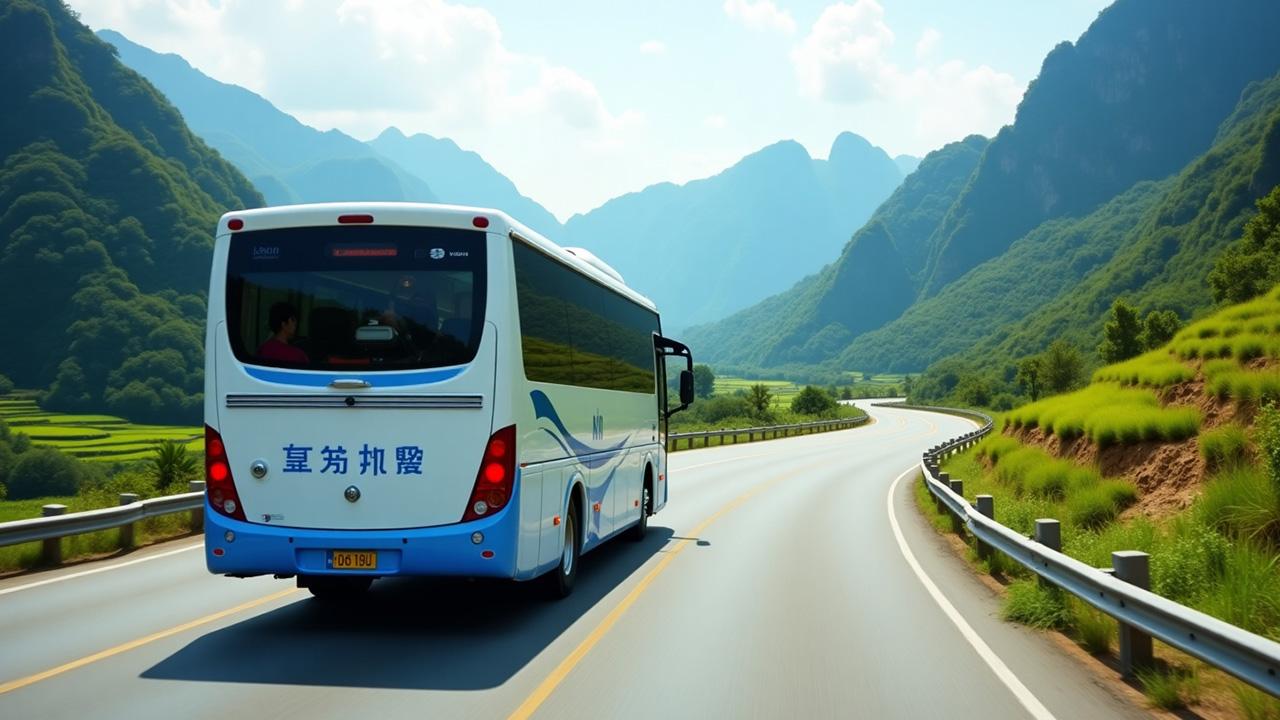
Beyond the basics, opting for a bus on the Hanoi to Mai Chau route opens up opportunities for spontaneous interactions and deeper cultural immersion. As the bus winds through rural villages, you’ll pass by rice paddies and limestone karsts, giving you glimpses of daily life that a faster mode of transport might overlook. Many travelers share stories of striking up conversations with locals or even joining impromptu stops for street food, which adds an element of surprise to the journey. However, it’s worth noting that road conditions can vary, so while the trip is generally smooth, occasional delays due to traffic or weather might occur, emphasizing the importance of flexibility in your plans.
Private Car vs. Public Bus
Comparing a private car to a public bus for the Hanoi to Mai Chau travel route highlights the trade-offs between personalized comfort and communal adventure, each suiting different types of travelers. A private car, often arranged through services like Grab or local tour operators, allows you to set your own schedule, making stops at scenic views or hiking trails at your leisure, which is ideal for families or those with heavy luggage. Costs range from $50 to $100 for a one-way trip, depending on the vehicle size, and drivers are usually knowledgeable, offering insights into cultural experiences along the way. This option transforms the journey into a tailored experience, where you can pause to explore a roadside market or capture photos of the stunning landscapes without rushing.

On the flip side, while a public bus provides a more economical choice at around $5 to $10 per ticket, it fosters a sense of community that a private car might miss on the Hanoi to Mai Chau route. Public buses are efficient for solo travelers or groups looking to mingle, as the shared environment encourages conversations and shared stories among passengers from diverse backgrounds. However, the lack of flexibility can be a drawback; you’re bound by the bus’s timetable and might not have the freedom to detour for accommodation options or local cuisine spots. Ultimately, if you’re prioritizing budget and social interaction, the public bus wins, but for those seeking control and comfort, a private car is the superior choice.
Alternative Transportation Methods (Motorbike, Train)
Alternative methods like motorbike trips or train rides for the Hanoi to Mai Chau travel route cater to adventurers craving a more immersive and exhilarating experience, diverging from the standard bus transfers. Renting a motorbike in Hanoi, available from shops near the Old Quarter for about $5-10 per day, lets you navigate the route at your own pace, weaving through traffic and stopping at hidden tourist destinations along the way. This option is particularly appealing for thrill-seekers, as it combines the freedom of the open road with opportunities to engage in cultural experiences, such as chatting with villagers or exploring scenic views off the beaten path. However, it requires a valid license and confidence in handling Vietnam’s sometimes chaotic roads, making it a choice for seasoned travelers.
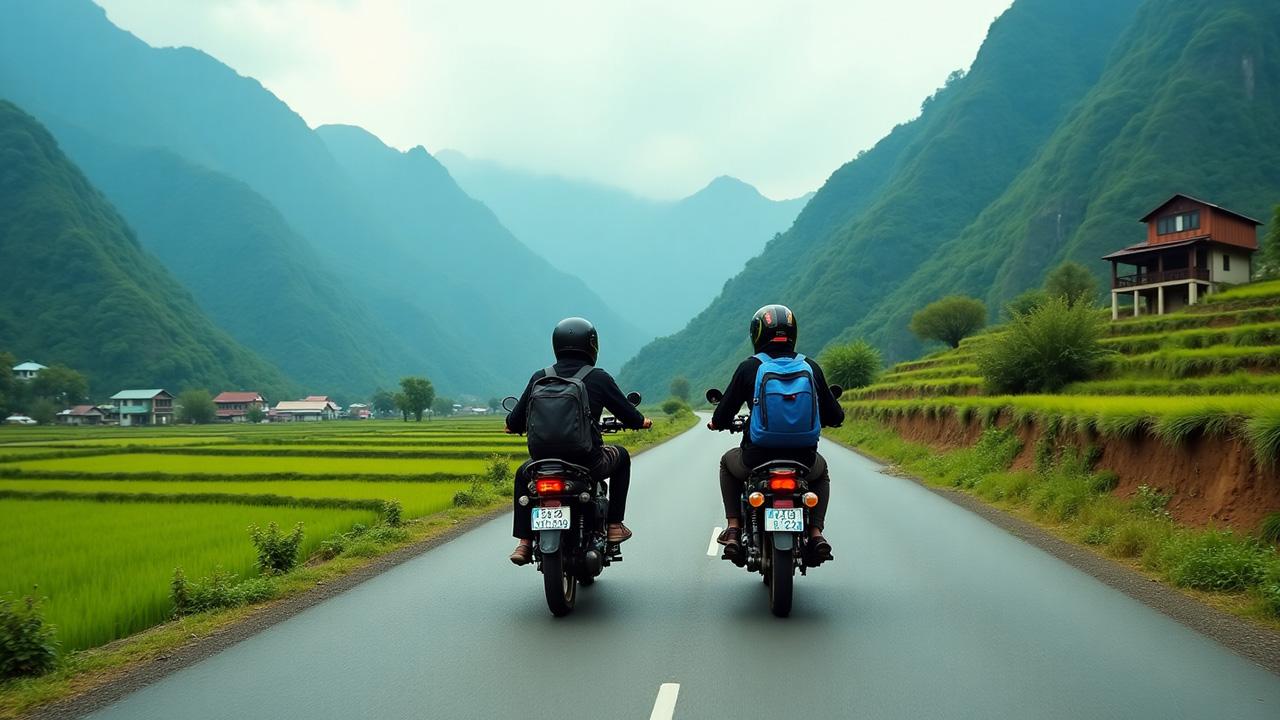
The train, though not a direct service to Mai Chau, serves as an intriguing alternative by taking you to nearby stations like Ninh Binh, from where you can arrange a transfer. Operated by Vietnam Railways, these trains offer a nostalgic ride with sleeper options for overnight journeys, allowing you to rest while covering part of the Hanoi to Mai Chau distance. This method provides a unique perspective on the landscape, with panoramic windows framing the scenic views and hiking trails in the distance, and it’s a great way to sample local cuisine at station stops. While less common for this specific route, the train adds a layer of historical charm, though it might involve additional logistics for the final leg, balancing adventure with practicality.
Travel Time and Distance
Understanding the travel time and distance for the Hanoi to Mai Chau route is essential for crafting a seamless itinerary that maximizes your enjoyment of the journey’s highlights, from motorbike trips to bus transfers. Spanning approximately 140 kilometers of varied terrain, this route showcases a mix of urban exodus and rural bliss, with factors like transportation options influencing how long it takes. By delving into the details, you can better plan for stops at tourist destinations, ensuring you don’t miss out on scenic views or cultural experiences that make this trip memorable.
Overview of Travel Duration
The typical travel duration for the Hanoi to Mai Chau route varies based on your chosen method, but most travelers can expect an average of 3 to 5 hours by road, depending on traffic and stops. If you opt for a bus transfer, the journey often clocks in around 4 hours, starting from Hanoi’s outskirts and gradually ascending into Mai Chau’s valley, where the air freshens and the pace slows. This timeframe allows for a relaxed progression, giving you moments to appreciate the evolving scenery, from the Red River’s banks to the misty mountains, making it feel less like a commute and more like a narrative unfolding.
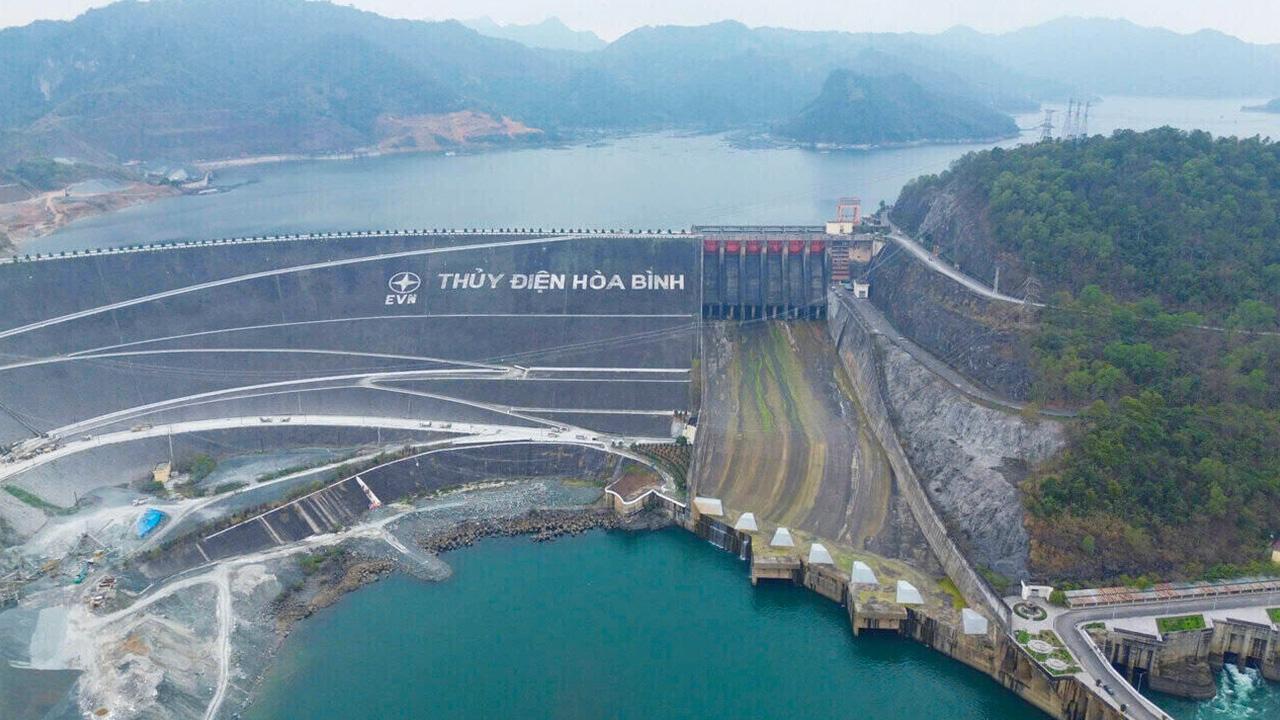
Beyond the baseline, the distance of about 140 kilometers means that even a motorbike trip, which might take 3 hours for experienced riders, offers flexibility to extend the adventure. Factors such as road quality and seasonal events can subtly alter this, but generally, it’s a route designed for daylight travel, encouraging pit stops at landmarks like the Hoa Binh Reservoir. This overview underscores how the Hanoi to Mai Chau travel route isn’t just about getting from A to B; it’s an opportunity to savor the journey, blending efficiency with exploration.
Factors Affecting Travel Time
Several factors can influence the travel time on the Hanoi to Mai Chau route, turning what might be a straightforward trip into an unpredictable yet exciting endeavor. Traffic congestion in Hanoi, especially during peak hours, can add an extra hour to your departure, making early morning bus transfers or motorbike trips advisable for smoother sailing. Weather plays a pivotal role too; rainy seasons might slow down public transport due to slippery roads, while dry periods allow for quicker progress and more enjoyable scenic views along the way.
Additionally, your choice of transportation options significantly impacts timing; a private car might navigate around delays more effectively than a public bus, which stops frequently for passengers. Construction work or festivals in rural areas can further extend the journey, but these interruptions often lead to serendipitous cultural experiences, like stumbling upon a local market. Understanding these elements ensures that travelers on the Hanoi to Mai Chau route can adapt their plans, perhaps by factoring in buffer time for hiking trails or accommodation checks, ultimately enhancing the overall trip.
Scenic Highlights Along the Route
The Hanoi to Mai Chau travel route is renowned for its scenic highlights, where every twist and turn reveals postcard-worthy vistas that elevate your journey beyond mere transportation. As you move from the city’s hustle to the countryside’s calm, the path serves as a gateway to Vietnam’s natural beauty, with opportunities for bus transfers or motorbike trips that allow you to pause and immerse yourself. This section explores the key landmarks and recommended stops, encouraging you to embrace the cultural experiences and tourist destinations that make this route unforgettable.
Key Landmarks to See on the Way
One of the most captivating aspects of the Hanoi to Mai Chau travel route is the array of key landmarks that dot the landscape, each offering a snapshot of Vietnam’s diverse geography and history. Starting with the Red River Bridge in Hanoi, travelers often marvel at its architectural elegance before transitioning to the Hoa Binh Dam, a massive hydroelectric structure that not only powers the region but also provides stunning panoramic views of the surrounding valleys. These sites are more than just photo opportunities; they represent the intersection of human ingenuity and natural splendor, inviting reflection on how infrastructure shapes cultural experiences.
Further along, the route passes through the limestone karsts near Hoa Binh, reminiscent of Ha Long Bay’s formations but in a more intimate setting, perfect for those on a motorbike trip seeking adventure. These natural wonders, with their jagged peaks and hidden caves, serve as backdrops for hiking trails that lead to lesser-known vantage points, enhancing the journey with elements of discovery. Exploring these landmarks on the Hanoi to Mai Chau route means engaging with the environment in a way that bus transfers alone might not allow, fostering a deeper connection to the land.
Recommended Stops During the Journey
To fully appreciate the Hanoi to Mai Chau travel route, incorporating recommended stops into your itinerary can transform a standard trip into a rich tapestry of exploration. A must-visit is the Cuc Phuong National Park, located midway, where you can detour for a short hike amid ancient rainforests, spotting rare wildlife and learning about conservation efforts that tie into local cultural experiences. This stop not only breaks up the travel but also offers a refreshing interlude, especially if you’re traveling via bus transfer, allowing time to stretch your legs and recharge.
Another gem is the traditional villages around Hoa Binh, where travelers can pause for tea with ethnic minority communities, gaining insights into their customs and perhaps even sampling local cuisine. These stops, whether on a motorbike trip or public transport, encourage spontaneous interactions that highlight scenic views and tourist destinations. By planning these breaks, you ensure that the Hanoi to Mai Chau journey becomes a holistic adventure, balancing movement with meaningful pauses.
Accommodation Options in Mai Chau
Upon arriving in Mai Chau via the Hanoi to Mai Chau travel route, selecting the right accommodation sets the tone for your stay, whether you’ve opted for a bus transfer or a motorbike trip. This area boasts a variety of options that cater to different preferences, from luxurious retreats to immersive cultural experiences, allowing travelers to unwind amid scenic views and proximity to hiking trails. In the following subsections, we’ll explore these choices in detail, helping you decide based on your desired level of comfort and engagement.
Hotels and Guesthouses
Hotels and guesthouses in Mai Chau represent a modern take on lodging, providing a comfortable bridge between the adventure of the Hanoi to Mai Chau journey and the tranquility of the destination. Establishments like the Mai Chau Lodge offer spacious rooms with air-conditioning, private balconies overlooking rice fields, and amenities such as spas and restaurants, making them ideal for families or those seeking a respite after a long bus transfer. These options often include guided tours to nearby tourist destinations, enhancing your trip withinsightful experiences and local flavor.
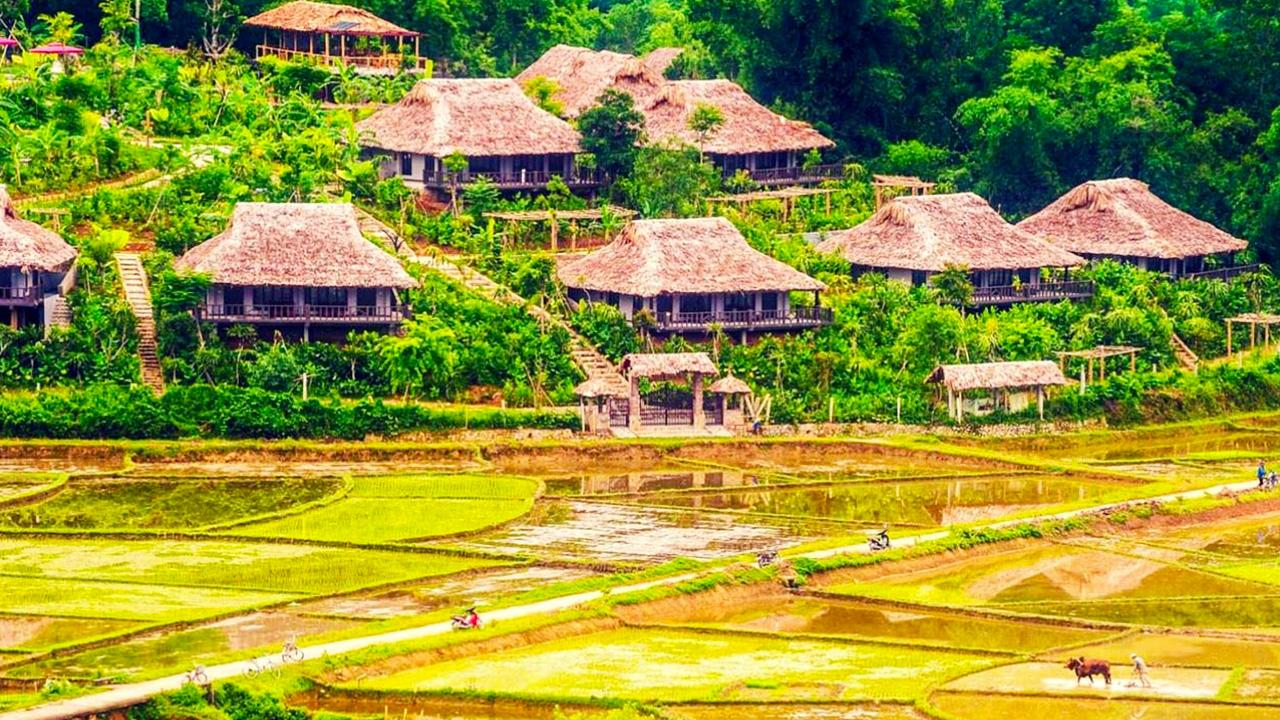
Moreover, guesthouses often deliver a more personal touch. Many are run by local families who provide a warm welcome and can share stories about their lives, traditions, and the surrounding area. Staying in such accommodations enriches the travel experience, transforming your nightly rest into a cultural immersion. Friendly conversations over breakfast might lead to unique recommendations on hidden hiking trails or intimate artisan workshops that wouldn’t typically be found in travel brochures. Therefore, both hotels and guesthouses cater to varying needs, allowing travelers on the Hanoi to Mai Chau route to choose comfort along with a slice of local life.
Traditional Homestays vs. Modern Lodging
When considering accommodations in Mai Chau, the choice between traditional homestays and modern lodgings adds an intriguing layer to the travel experience. Traditional homestays, often constructed from bamboo and wood, allow visitors to live among ethnic minority households, immersing themselves in the local culture. Travelers can participate in daily activities such as weaving, cooking, or farming, creating a connection that transcends mere observation. This option is particularly appealing for those aiming to understand the cultural richness of the region, turning your nights into enriching encounters rather than just a place to sleep.
On the other hand, modern lodging offers a sense of security and convenience that’s often appreciated, especially after a long bus transfer from Hanoi. Hotels and resorts deliver standard amenities and stability, appealing to families and travelers seeking comfort. With a spectrum of pricing options, from budget stays to luxury escapes, modern lodgings can cater to diverse travelers, ensuring that a return to comfort and familiarity after a day of outdoor adventures or cultural explorations is available. Thus, choosing between traditional homestays and modern lodging should reflect personal travel goals, enabling a tailored experience in the enchanting setting of Mai Chau.
Activities and Attractions in Mai Chau
With its stunning landscapes and rich cultural tapestry, Mai Chau offers an array of activities and attractions that invite exploration and connection. Travelers arriving on the Hanoi to Mai Chau route will quickly realize the region’s charm lies in both its breathtaking natural beauty and its vibrant cultural experiences. This section delves into the array of opportunities available, from cultural festivals to outdoor adventures, ensuring you experience the full spectrum of what Mai Chau has to offer.
Cultural Experiences and Local Festivals
Cultural experiences are at the heart of what makes Mai Chau special, with local festivals serving as vibrant showcases of tradition and community spirit. Events such as the Lunar New Year Festival or the Pao De Festival highlight the customs and crafts of the various ethnic groups in the region. Participating in these festivities allows travelers to witness traditional music, dance, and artisanal crafts firsthand, creating memories that resonate long after your Hanoi to Mai Chau journey ends. Observing or joining in on these communal celebrations fosters an understanding of the deeply ingrained values and history that define the area.
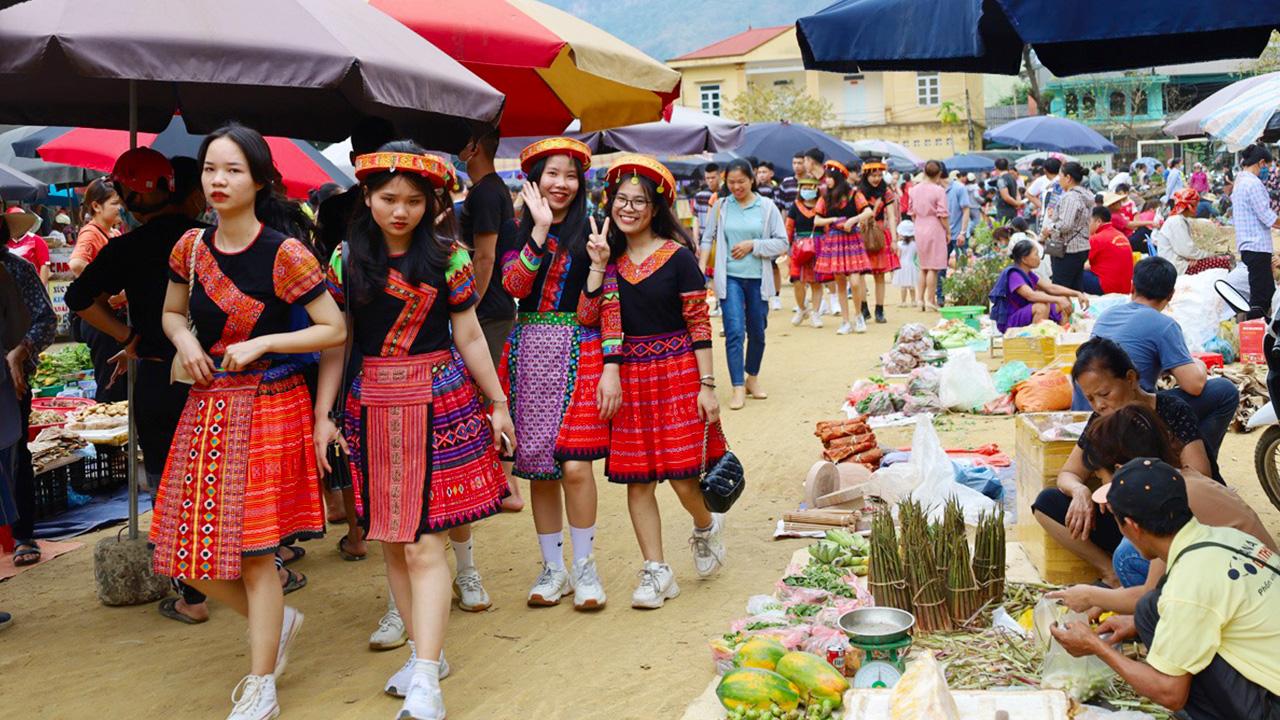
Moreover, local workshops available throughout the year provide invaluable hands-on experiences that enhance cultural immersion. For instance, you might find yourself weaving traditional textiles or learning about the rice cultivation process from local farmers. These sessions not only return participants with unique souvenirs but also ignite conversations and connections with the people of Mai Chau, making your journey remarkably interactive. Engaging with the local culture during your visit truly enriches the Hanoi to Mai Chau travel experience, allowing you to create bonds that elevate your understanding of the way of life here.
Outdoor Adventures (Trekking, Cycling)
For the intrepid traveler, Mai Chau presents a multitude of outdoor adventures that cater to varying levels of adventure-seeking. The region is a paradise for trekking enthusiasts, with well-marked trails winding through lush rice paddies, rolling hills, and dramatic limestone cliffs that provide breathtaking views at every turn. Guided trekking tours are available, offering insights into the ecological diversity and cultural heritage that define this spectacular area—a perfect complement to your Hanoi to Mai Chau journey. The exhilaration of reaching a summit provides not only stunning vistas but also an appreciation for the hard work and dedication locals pour into maintaining their lands.
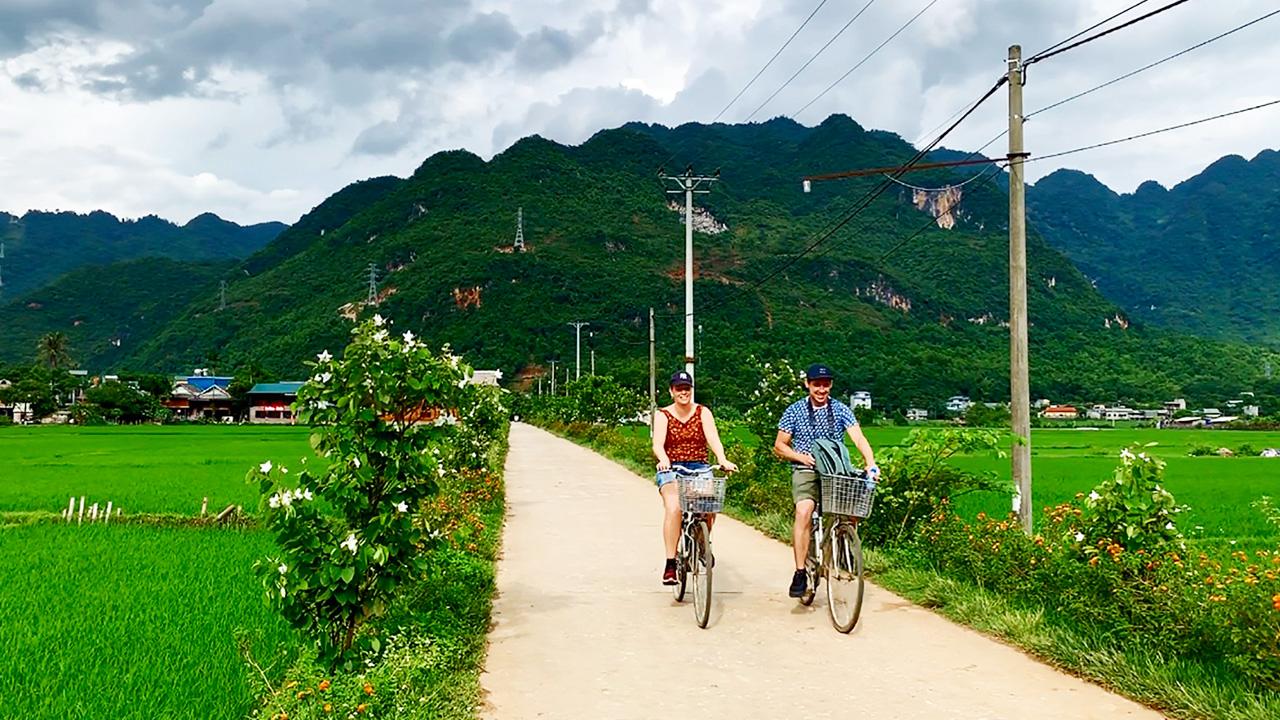
Cycling through the countryside offers another thrilling way to explore Mai Chau’s natural beauty. The gentle slopes and picturesque landscapes, coupled with the warm rays of the Vietnamese sun, create an ideal environment for a leisurely bike ride. Local cycling tours guide you through hidden trails, showcasing charming villages, peaceful streams, and welcoming locals who might invite you for tea along the way. Exploring by bike makes for an active and flexible adventure, ensuring that you’re able to create your own path and discover the treasures that lie off the beaten track.
Local Cuisine in Mai Chau
The culinary landscape in Mai Chau is a feast for the senses and a vital reflection of the region’s cultural richness, influenced heavily by its ethnic minority communities. As you reflect on your journey from Hanoi to Mai Chau, exploring the local cuisine becomes an essential aspect of your experience, tantalizing your taste buds with dishes that tell a story of tradition and innovation. This section will dive into the must-try dishes and the broader culinary influences that shape food in Mai Chau.
Must-Try Dishes and Restaurants
Local cuisine in Mai Chau emphasizes fresh ingredients and a rich blend of flavors that reflect the agricultural bounty of the area. A signature dish not to be missed is “xia xiu,” tender cuts of marinated pork grilled to perfection, often served with a side of fragrant rice and fresh greens. Notably, the region is famed for its “canh chua” — a deliciously tangy fish soup that combines seasonal vegetables, herbs, and local fish harvested from nearby rivers. This unique dish is often served at local eateries, allowing you to enjoy an authentic taste of the region while engaging with the locals.
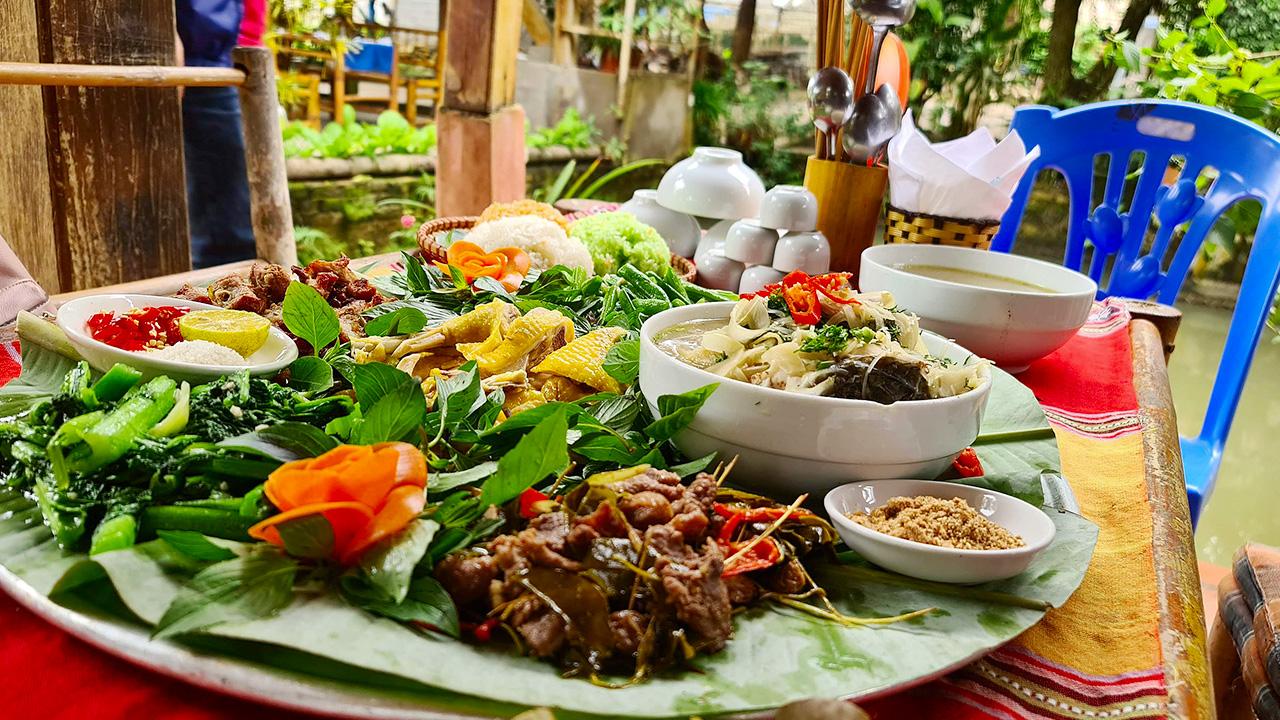
The dining scene in Mai Chau varies from street food stalls to more formal dining options, providing diverse culinary experiences for travelers. Family-run restaurants often serve as beloved local hangouts, where you can sample specialties while mingling with the residents. Recommendations from fellow travelers often point to specific eateries that maintain a homey, welcoming atmosphere, ensuring that every meal is served with a side of hospitality. By savouring local dishes, your journey along the Hanoi to Mai Chau route transforms into a delightful culinary adventure, teaching you about the area’s culture through its food.
Influence of Ethnic Minorities on Local Food
The culinary traditions in Mai Chau are significantly influenced by the region’s ethnic minorities, comprising hill tribes such as the Thai and H’mong. Their unique practices bring an authentic flair to local dishes and reveal the heart and soul of their communities. The use of herbs and spices, often gathered from the wild or grown in family gardens, infuses meals with bold and aromatic flavors that are distinct to this area. For instance, dishes often incorporate fragrant herbs that are integral to the region’s herbal medicine traditions, illustrating the deep connection these communities have with their land.

Furthermore, seasonal foods manifest the dynamic nature of Mai Chau’s culinary scene, drawing on locally available ingredients to create dishes that pay homage to the agricultural calendar. During harvest seasons, rice and vegetable-based meals take center stage, while meat dishes may be more prevalent during festivals and celebrations. As you explore local markets and eateries along the Hanoi to Mai Chau route, you will observe how the region’s cuisine stimulates not only your appetite but also provides insight into the lives of the people who call this beautiful area home.
Tips for Planning Your Trip
As the anticipation builds for your journey from Hanoi to Mai Chau, practical tips and recommendations are essential for ensuring a smooth and enjoyable experience. Knowing the best times to visit and packing the right essentials will leave an indelible impact, enriching your experience in this stunning destination. This section aims to equip you with key insights to help you optimize your trip planning.
Best Time to Visit Mai Chau
The best time to visit Mai Chau generally falls between October and April when temperatures are mild, and the region is adorned in vibrant colors. Autumn, particularly, features a beautiful, golden landscape due to the rice harvest, creating a picturesque backdrop for your hiking adventures and cultural experiences. During this time, the weather is usually dry, affording clearer views as you traverse the breathtaking mountain paths. Furthermore, the mild climate invites outdoor activities, whether it be trekking, cycling, or simply wandering through the charming villages.

In contrast, from May to September, the landscape takes on a lush, vibrant green hue thanks to monsoon rains, but it’s crucial to weigh the potential weather disruptions. Rain showers can impact travel plans, making certain paths slippery and muddy. However, this season can yield its own set of rewards, such as thriving flora and fauna. The wet season also provides a quieter atmosphere, perfect for those seeking solitude in nature. Ultimately, understanding the climatic variations in Mai Chau can help in tailoring your visit to align with your personal preferences and travel goals.
Essential Packing List for Travelers
An essential packing list is vital for ensuring you have a comfortable and enjoyable experience during your Hanoi to Mai Chau journey. First and foremost, bear in mind the need for layered clothing. The weather can fluctuate throughout the day, especially in the mountainous terrain, where mornings and evenings may be cooler. Lightweight, breathable fabrics are ideal for daytime activities, while warmer layers or a light jacket will prepare you for cooler nights.
In addition to clothing, don’t forget to pack comfortable footwear suitable for hiking or cycling. Sturdy sneakers or hiking boots will help you navigate uneven terrain with ease. It’s also wise to carry a small daypack containing essentials like sunscreen, insect repellent, a reusable water bottle, and lightweight rain gear. Often overlooked, these items not only contribute to your comfort but empower you to enjoy cultural experiences and natural beauty to their fullest. The thoughtful preparation of your essential packing list lays the foundation for a fulfilling adventure in Mai Chau.
Practical Information for Travelers
As you embark on your Hanoi to Mai Chau journey, having practical information at your fingertips contributes significantly to a seamless travel experience. Safety considerations and cultural etiquette form critical aspects of your visit, ensuring that your interactions with locals are respectful and rewarding. Below, we delve into these essential elements that will enhance your journey through this picturesque region.
Safety Considerations While Traveling
Safety is paramount when traveling in any new area, and Mai Chau is no exception. As a tourist, practicing caution, particularly when traveling to remote areas, can ensure both your well-being and enjoyment. Always remain aware of your surroundings, keeping personal items secure and avoiding displays of valuables that might attract unwanted attention. Additionally, while engaging in outdoor activities, it’s essential to remain hydrated, and let someone know your plans if you intend to hike or bike in more isolated regions.

When navigating the rural roadways, particularly as a motorbike traveler, adapt to local driving conditions, which can differ markedly from urban environments. Maintaining a safe speed on winding, mountainous paths is important, and wearing a helmet and protective gear is highly recommended. Moreover, engaging with local guides can enhance safety while providing insights into the landscape and local culture that you might otherwise miss, thereby enriching your overall experience.
Language and Cultural Etiquette
Understanding basic language and cultural etiquette can significantly enrich your experience in Mai Chau. While many locals will have a basic grasp of English, learning a few Vietnamese phrases can go a long way in fostering goodwill and respect. Simple greetings or expressions of gratitude in the local language can open doors to warm interactions, making it easier to engage with the community and providing a deeper understanding of customs and traditions.
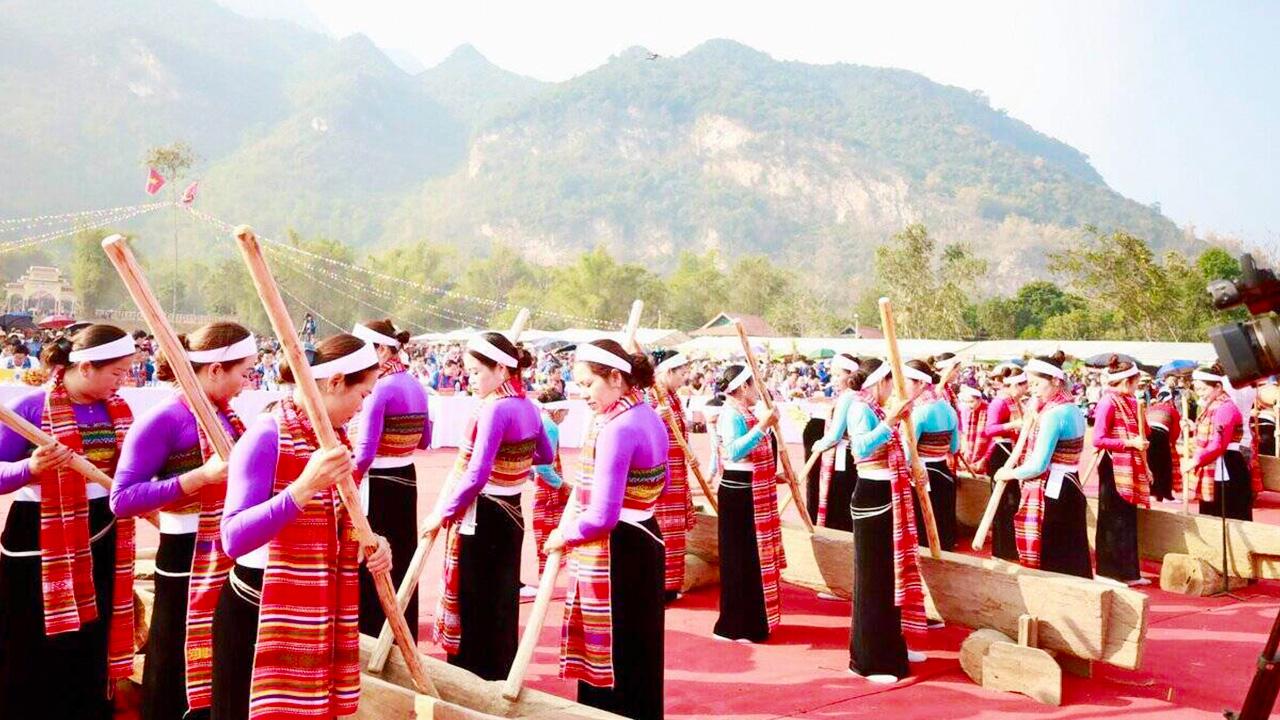
Moreover, respecting local customs is vital in ensuring positive interactions during your stay. Maintaining a polite demeanor, such as dressing modestly when visiting villages, shows respect for the local way of life. In some cultures, direct eye contact can be considered a challenge, while in others, it may be viewed as a sign of trust and respect. Observing those around you and following their lead is a good rule of thumb. Making an effort to engage respectfully with the local culture not only enhances personal experiences but also fosters positive relationships, leaving lasting memories as you navigate your Hanoi to Mai Chau journey.
Conclusion
Traveling from Hanoi to Mai Chau allows travelers to experience an exquisite blend of natural beauty, rich culture, and unforgettable culinary delights. Choosing the right transportation option—whether it’s a bus, private car, or motorbike—can significantly enhance your journey and provide flexibility to explore scenic highlights along the way. Once you arrive, indulge in diverse accommodation options that cater to your preferences and engage with the local culture through various activities and attractions. Savor traditional dishes influenced by the region’s ethnic minorities, and remember to prepare adequately by considering the best travel times and essential packing items. Ultimately, immersing yourself in this enchanting destination and embracing its people and culture will create memories that will last a lifetime.






